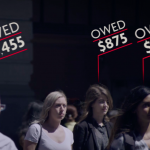Young Australians are paying more attention to super than ever: report

In the wake of the uncertainties brought by COVID-19, young Australians are making their financial future a priority, according to super fund Equip.
In an additional sign that Australians are taking their super more seriously from a young age, Equip found that almost half of the respondents overall (46 per cent) have made voluntary super contributions, with as many as 2 in 5 (39 per cent) starting before they hit their 30s.
“Young Australians are thinking about their financial plans much more than they have previously,” says Equip CEO Scott Cameron.
“It is encouraging to see that younger people are prioritising their finances, and seeing value in contributing more to their super early in their careers.”
While the pandemic was undoubtedly a challenging time for all, the under 35s were hit especially hard. The same survey found a third (33 per cent) lost working hours during the pandemic, while almost one in seven (13 per cent) lost their jobs or were granted a leave of absence.
Despite this, nearly a third of Australians had the opposite experience, emerging from the pandemic with more income (28 per cent) or more disposable income (27 cent) than they did at the start, and are taking a ‘hands on approach’ with their savings in light of earning more.
Almost a third (27 per cent) of working Australians reported having more disposable income today than at the start of the pandemic, with 35 per cent of those aged 18-34.
Young Australians are especially likely to start investing this money, with almost a third (29 per cent) of under 35s investing in super or other investment products for the first time during COVID, and 28 per cent planning to begin investing money into super in the near future.
Georgia Woods, a 29 year old Customer Relations Officer from Melbourne, is one of those with access to more disposable income post-COVID.
“I changed jobs in 2020 due to increased opportunities in the market, which resulted in higher pay and more disposable income,” said Ms Woods.
“The pandemic definitely made me think more about the future, and drove me to take control of my super. I recently reviewed my super options including insurance premiums, and consolidated my existing funds into one to reduce overall fees.
“The next step for me, once all my debt is paid off, will be making regular voluntary contributions, as this can pay off tremendously well long term. I’m considering waiting until my HECS (study) fees are repaid, and diverting the same amount to my super, so that the impact on my take home pay is less noticeable,” said Ms Woods.
When considering their financial plans, young Australians should also take into account the increasing superannuation contribution base rate. Currently set at 10 per cent of ordinary time earnings, and expected to gradually grow to 12 per cent by 2025, this change will guarantee a greater amount of funds saved for retirement in the long run.
However, it should remain important for young Australians to take charge of their future by thinking about securing safe and comfortable financial prospects as early as possible, according to Cameron.
“The past two years have been immensely difficult for young Australians so it’s not surprising there’s a trend towards taking measures to reduce ongoing financial stress in later life. Prioritising voluntary contributions from a young age is one way people can set themselves up for a more comfortable future. Even allocating just a small percentage of savings each month towards your super now can bring you a step closer to a comfortable, and possibly even early, retirement.”
While our younger generations may be more financially savvy than their predecessors when it comes to newer investment platforms, such as NFTs and crypto, the latest data shows one third (33 per cent) of 18-34 year olds are still oblivious to how much they actually have in what is probably their longest standing investment – their super fund.
“It is never too early to start thinking and planning for long-term milestones such as retirement. The easiest way to make a start is to see how much you already have saved, and how much extra you can afford to commit to making additional contributions.”








